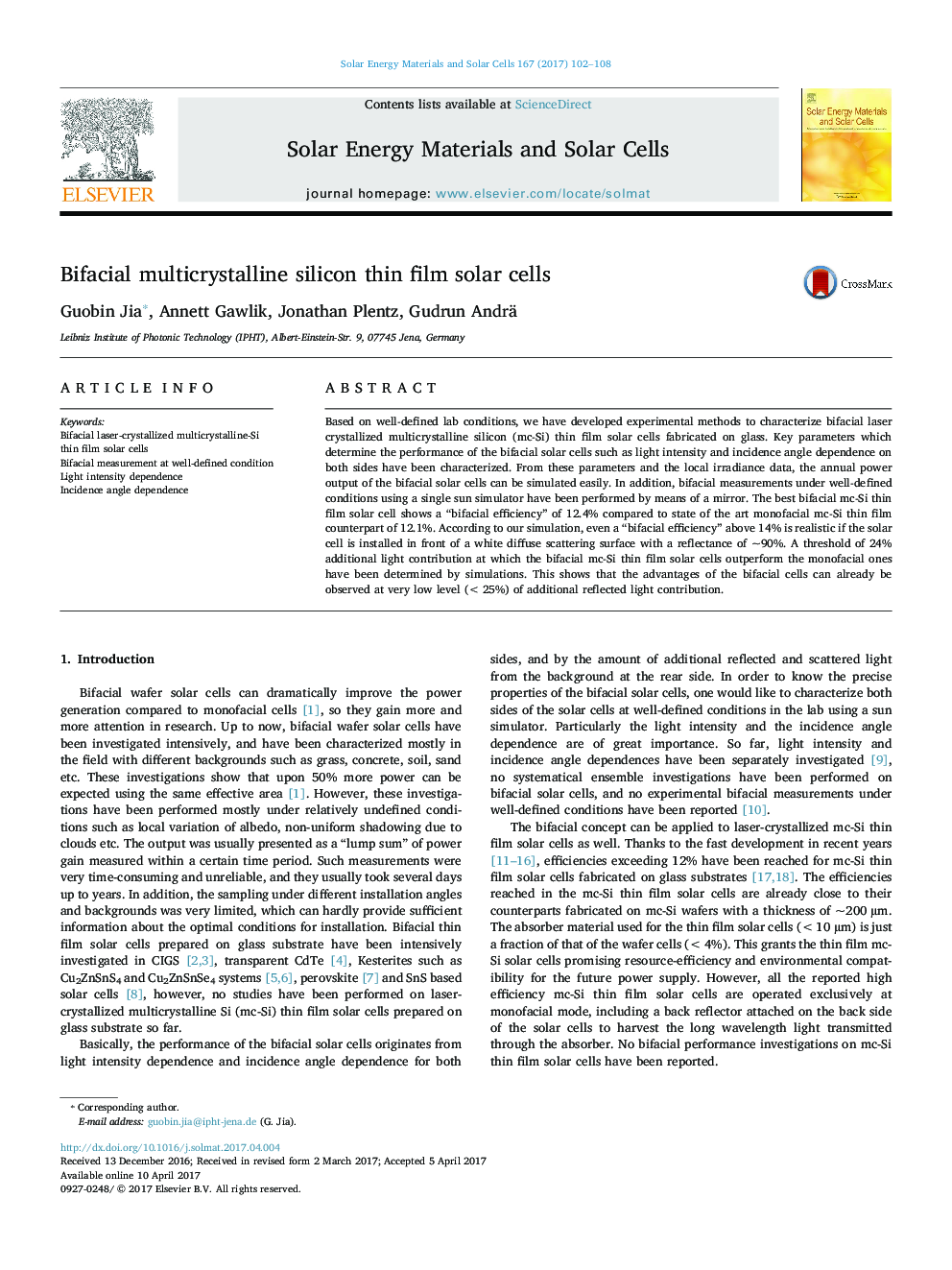| Article ID | Journal | Published Year | Pages | File Type |
|---|---|---|---|---|
| 6457265 | Solar Energy Materials and Solar Cells | 2017 | 7 Pages |
⢓Bifacial efficiency” of 12.4% reached on mc-Si thin film solar cell.â¢A “bifacial efficiency” above 14% is realistic at optimal installation conditions.â¢Light intensity and incidence angle dependences measured at lab conditions.â¢A threshold of 24% over which bifacial outperforming monofacial cells determined.â¢Bifacial measurements of mc-Si thin film cells using a single sun simulator.
Based on well-defined lab conditions, we have developed experimental methods to characterize bifacial laser crystallized multicrystalline silicon (mc-Si) thin film solar cells fabricated on glass. Key parameters which determine the performance of the bifacial solar cells such as light intensity and incidence angle dependence on both sides have been characterized. From these parameters and the local irradiance data, the annual power output of the bifacial solar cells can be simulated easily. In addition, bifacial measurements under well-defined conditions using a single sun simulator have been performed by means of a mirror. The best bifacial mc-Si thin film solar cell shows a “bifacial efficiency” of 12.4% compared to state of the art monofacial mc-Si thin film counterpart of 12.1%. According to our simulation, even a “bifacial efficiency” above 14% is realistic if the solar cell is installed in front of a white diffuse scattering surface with a reflectance of ~90%. A threshold of 24% additional light contribution at which the bifacial mc-Si thin film solar cells outperform the monofacial ones have been determined by simulations. This shows that the advantages of the bifacial cells can already be observed at very low level (<25%) of additional reflected light contribution.
Graphical abstractDownload high-res image (232KB)Download full-size image
